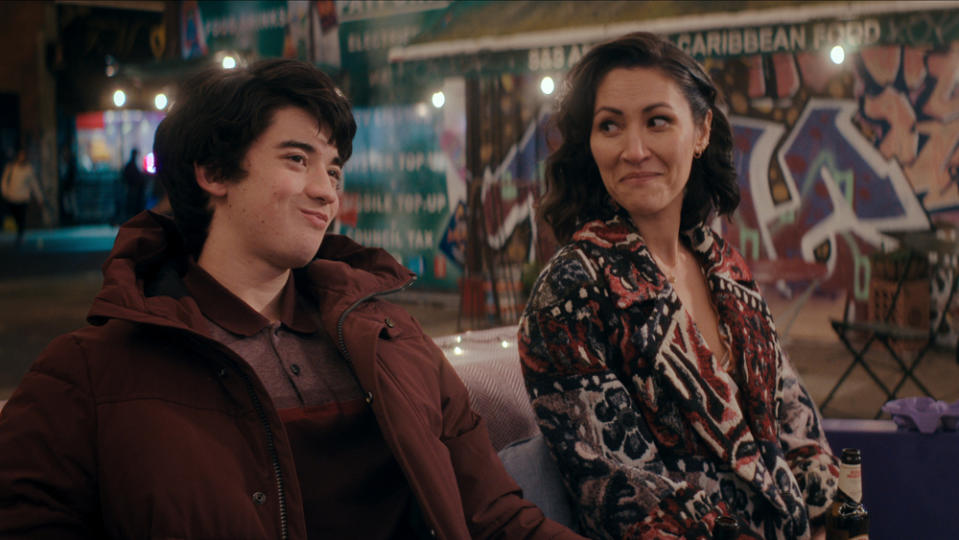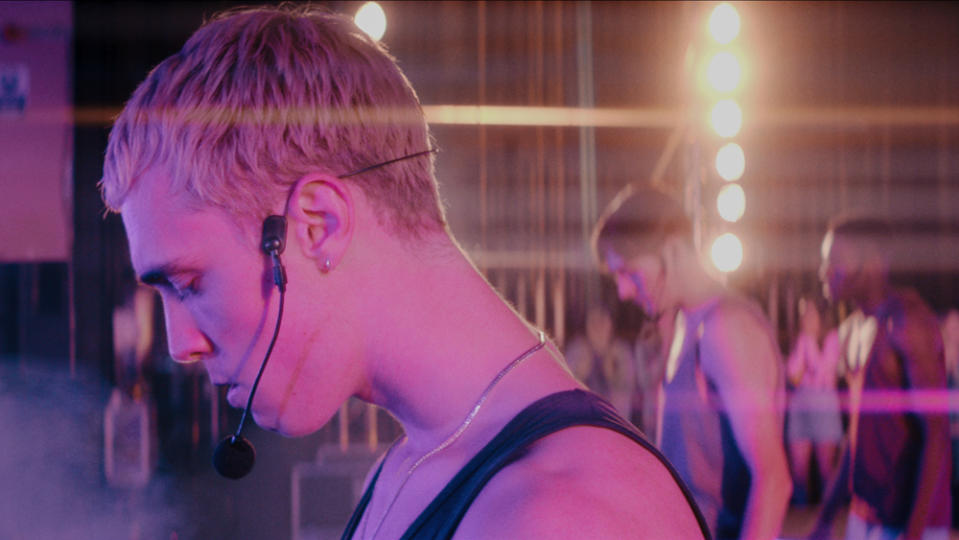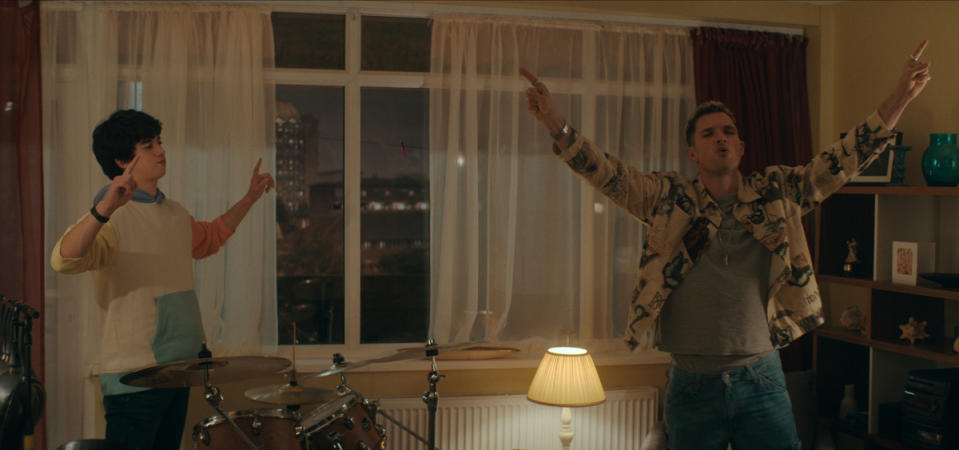First Look at Netflix’s British Movie ‘I Used to Be Famous,’ Starring Ed Skrein, Leo Long (EXCLUSIVE)

In British director Eddie Sternberg’s feature debut “I Used to Be Famous” – produced by Collie McCarthy at Forty Foot Pictures for Netflix – two sides of the music world clash with each other. Netflix released the trailer for the film Monday (below), and Variety has been given the first-look images, exclusively. The film is one of the first to come out of Netflix’s U.K. Original Slate, commissioned by Fiona Lamptey, director of U.K. features. It will be released in select U.K. theaters from Sept. 9, and on Netflix from Sept. 16.
Sternberg set out to create a film with “a British heart,” he says. “It is made in the vein of ‘The Full Monty,’ ‘Billy Elliot’ and ‘East Is East’ … that sort of heartfelt British film with a bit of grit, with earned heart that doesn’t become cheesy. It’s heartfelt rather than cheesy.” It is set in Peckham, a working-class, culturally diverse neighborhood in South-East London. The screenplay is co-written by Sternberg and Zak Klein.
More from Variety
There are two principal characters in the film: Vince, a washed-up former lead singer for a boy band, played by Ed Skrein, and Stevie, an autistic teenager who is a gifted drummer, played by neurodiverse musician Leo Long. Vince represents the corrupt, soulless commercial music scene, while Stevie represents the purer world of the amateur enthusiast, who loves music for itself.
The film is based on Sternberg’s short of the same name, which came out of his fascination with former boy band and girl band members. These former pop stars “had so much success at such a young age, and an excess of sex, drugs, rock and roll, then they get chewed up and spat out, and then they’re having to deal with that void,” he says. Sternberg used this perspective to develop the character of Vince, whose “career started on the premise of music – he was there to perform music – when actually in reality, it was about anything but music; he was a product.”

Courtesy of Netflix
Sternberg then set out to create a character who would stand in opposition to Vince’s “twisted existence with regards to music.” The person who came to mind was Sternberg’s cousin, Saul Zur-Szpiro, an autistic man who has very high support needs. When he was young, he was agoraphobic, he didn’t like going out, and didn’t like crowds. But he had a loving, warm family, who were quite musical. His sister played the drums, and when he was given the drumsticks it was clear he had a good sense of rhythm. With the support of tutors he took up the drums, and formed a band called The AutistiX, where the majority of the members are autistic. They started to build a bit of a following, and ended up touring, which culminated in them performing on stage at a charity event in front of 1,000 people. Tom Jones, who happened to be at the event, joined them on stage.
“That story, for me, just showed the literal power of music,” Sternberg says. “By picking up drumsticks, Saul – who was agoraphobic, didn’t like going out, didn’t like crowds – suddenly, through music got this power to perform in front of 1,000 people. It gives me shivers talking about it. So I thought that was music in its purest form. When you watch Saul perform, it’s just pure enjoyment, there’s no ego attached to it. Whereas with Vince, it’s all ego, and it’s all manufactured.”
Isabella Odoffin, the film’s casting director, was given the task of finding an actor to play Stevie in the feature film. After a nationwide search – visiting schools, music groups and community groups – and receiving hundreds of tapes, about 20 kids were brought in for auditions in London. That group was slimmed down to four, who did workshops with Sternberg, and then two screen tested with Skrein, and Long got the role.

Courtesy of Sanja Bucko/Netflix
Long is a multi-instrumentalist, and came to the audition with a bodhran – an Irish drum – and a banjo. He plays in the London Youth Folk Ensemble and the National Open Youth Orchestra.
“He just blew us away with his character. He had this real zest for life, and you see that on screen,” McCarthy says. “Leo was actually very similar to Stevie in that he was on the cusp of his own independence … late teens, and looking to push his boundaries a bit by going to college. It’s been great to see him grow throughout production and to where he is now.”
Long is set to appear in a stage production of Shakespeare’s “Much Ado About Nothing” in Sheffield, England, and appears this year in British broadcaster ITV’s crime drama “Professor T.” He is represented by Simon & How Associates.

Courtesy of Netflix
The filmmakers worked closely with the National Autistic Society and Access All Areas, which creates theater and performance featuring learning disabled and autistic artists. Access All Areas’ Tricia Hitchcock was Long’s creative coach during the production.
Hitchcock worked with Long “like any acting coach, just with a heightened awareness of what needs he might have. She spent a lot of time upfront just getting to know him, and how he responds, and what works, and giving him the confidence to come into our arena, and us the confidence to welcome him in, and create the right environment,” McCarthy says. Hitchcock also worked with other cast members, in particular with Skrein and Eleanor Matsuura, who plays Amber, Stevie’s mother.
The filmmakers opened their shoot with scenes about a drum circle that Stevie belongs to, which included several neurodiverse non actors. Hitchcock delivered a speech to the crew at the start of the shoot that “created a really special dynamic, where you had these big burly grips and gaffers, and suddenly everyone just got over themselves for a day, and realized how special it was,” McCarthy says. “It was a risk starting with that, but it actually galvanized everyone on set, and created a really nice tone for the [seven-week shoot].”

Courtesy of Netflix
The part played by music is, naturally, key to the film’s appeal and story. Commenting on the soundtrack, Sternberg says: “I’ve always been a huge admirer of directors that use very heavily curated soundtracks like Paul Thomas Anderson, with ‘Boogie Nights,’ and Richard Linklater, with ‘Dazed and Confused,’ and Cameron Crowe [‘Almost Famous’]. I’ve always felt like that was the sort of filmmaker I want it to be. I’m always thinking scenes with regards to music.” He acknowledges that the soundtrack is “super diverse.” “There’s not really a clear genre within the soundtrack,” he says. “But it all kind of fits. There’s a kind of red thread, even though it doesn’t seem like that on the surface. If you’ve got the Doobie Brothers, and then you’ve got Frazey Ford, they’re totally different styles of music, but actually, it seems to work for the film.”
In terms of the music within the film, the diegetic music – in particular, the music played by the Tin Men, the band formed by Vince and Stevie – Sternberg says: “I’d always imagined Vince as being someone who was never that amazing a singer, but he had heart. And I was thinking about the type of singers that I got that from, and I look at people like Jim Morrison and Ian Curtis, who would have this deep way of singing, and you believed every single word that they’re saying.”
Sternberg and McCarthy are pursuing other projects in which music plays a central role, including one that is in development with Netflix. “We can’t really talk too much about it at the moment, but it’s definitely got music in there,” Sternberg says. “I think what I’d love to do with Eddie at some point down the line is a kind of seminal biopic in the music space,” McCarthy adds.
Best of Variety
From 'The Sandman' to 'Blonde': Books Made Into Movies and TV Series That You Should Read
Jennette McCurdy's Provocative Book 'I'm Glad My Mom Died' Is Already a No. 1 Bestseller
Sign up for Variety’s Newsletter. For the latest news, follow us on Facebook, Twitter, and Instagram.

 Yahoo Movies
Yahoo Movies 